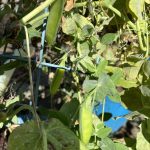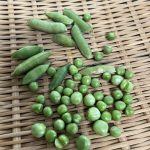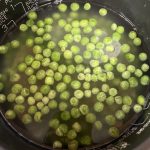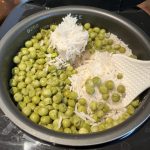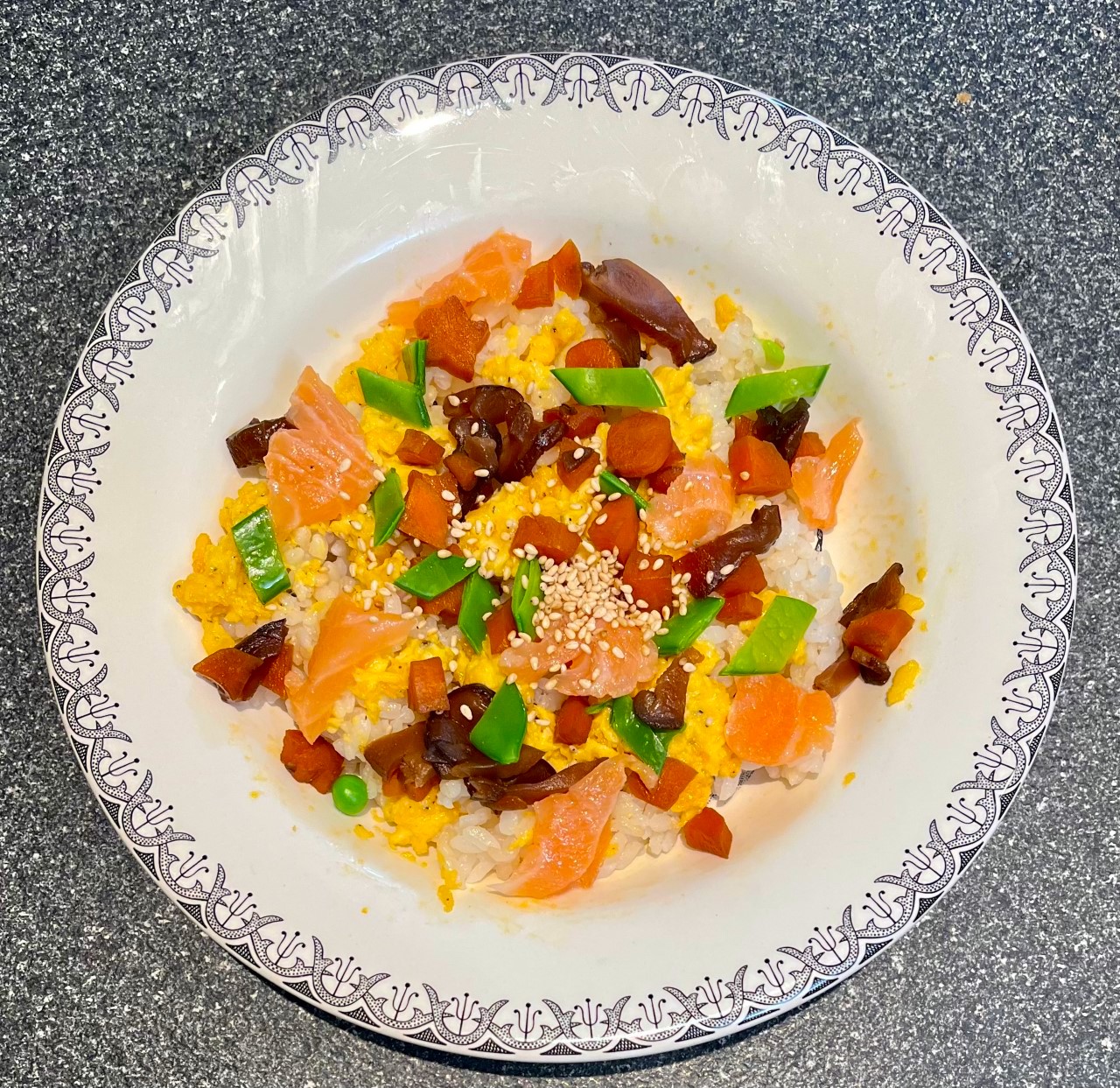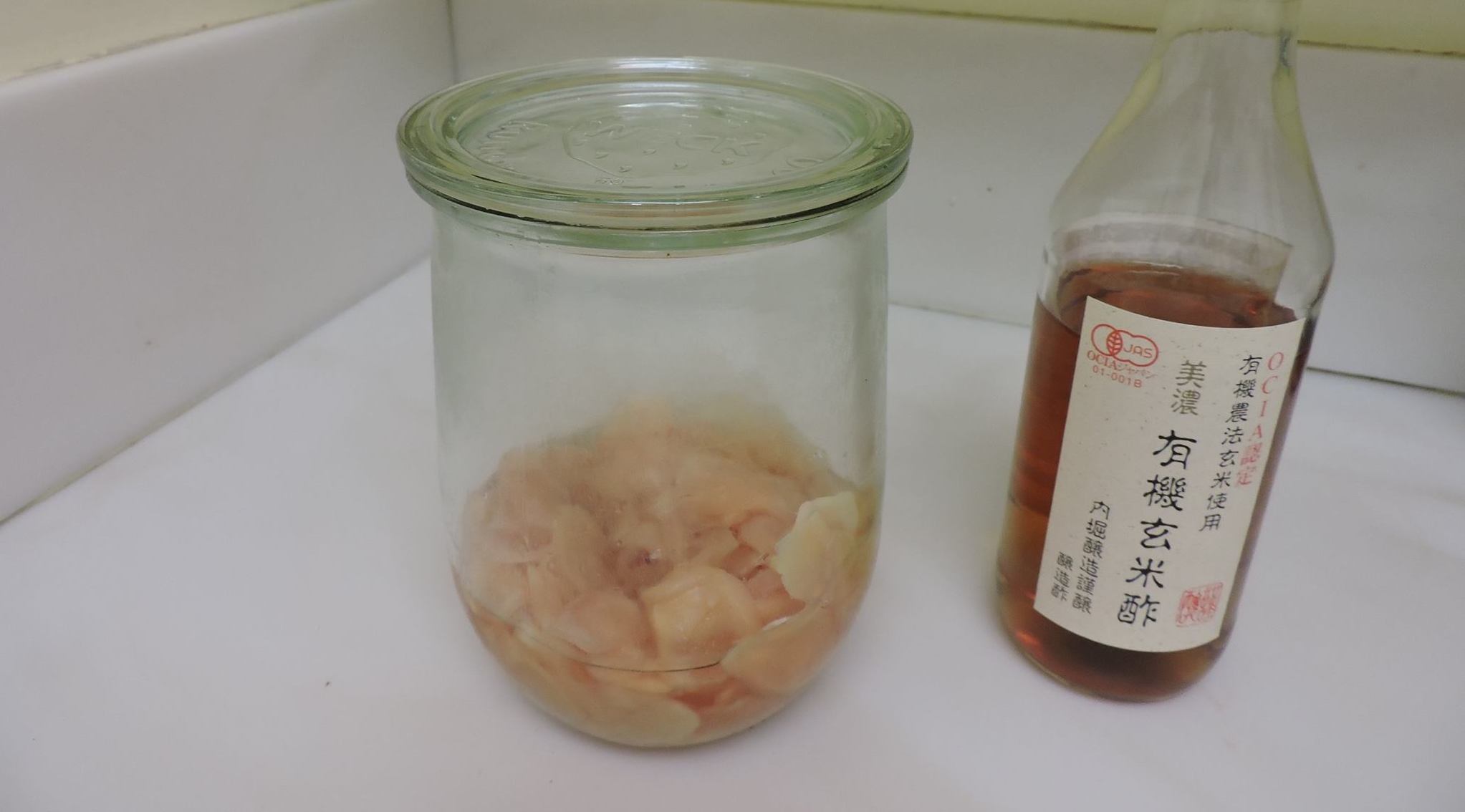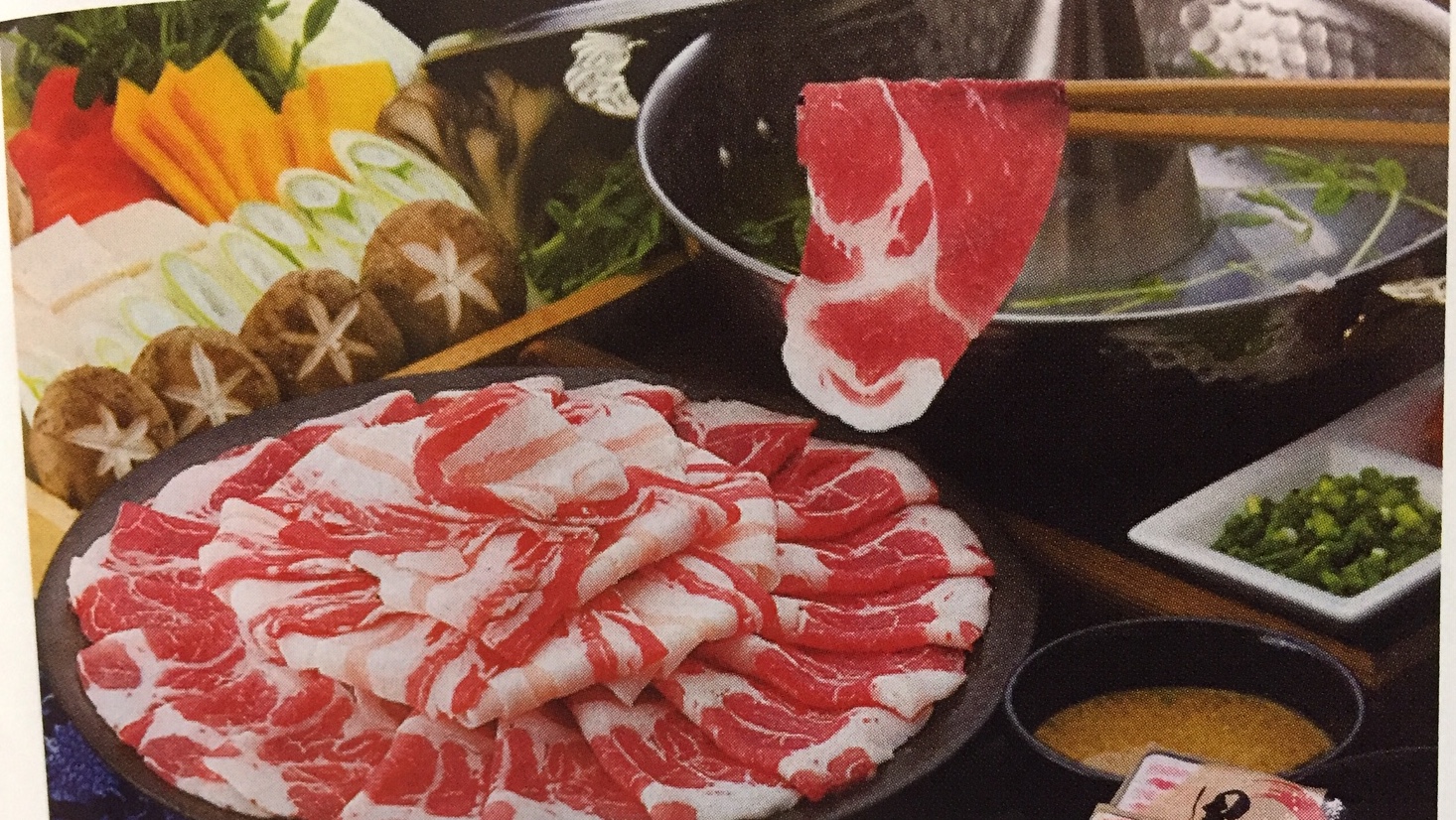和訳は英文の下にございます。/ The Japanese translation is below the English text.
GREEN PEA RICE
Contents 1. The Green Pea plant 2. Ingredients of Green Pea Rice (about 5 servings) 3. Directions 4. Some thoughts on the recipe
1. The Green Pea plant
This spring, we are growing green pea plants in our garden.
I didn’t know that when greens peas are young and pods tender, we can harvest and use them as “snow peas” in Chinese dishes and salads, and when the peas are fully grown, we shell and use them as green peas. In the latter case, the pods are too hard to eat.
In our garden, we patiently waited until the pods became fat to harvest green peas. A few were ripe each week, so we kept them in the refrigerator until we have enough.
Then we cooked Pea Rice (mame-gohan in Japanese). The aroma of cooked peas, and the sweetness of the peas and Japonica rice are the taste of spring in Japan.
Since it doesn’t have strong flavor, it goes with any type of cuisine. It is also so easy to make and delicious that we would to share it with you.
2. Ingredients of Green Pea Rice (about 5 servings)
- Japonica Rice, 360 ml or 10 oz (280 grams)
- Green peas, fresh, shelled, about 4 oz (120 grams)
- Water to cook rice (please measure according to the package direction or your rice cooker)
- Japanese Rice wine, 2 Tablespoons (30 ml)
- Salt, a pinch
3. Directions
1. Rinse the rice and drain. Put it in a pot or rice cooker with measured water according to the instruction on the package or your rice cooker.
2. Remove two tablespoons of water from the pot and add two tablespoons of wine.
3. Add peas and salt to the rice and cook according to the instruction on the package or your rice cooker.
4. When it’s ready, fluff up the rice with a spatula while it is hot. The idea is to put the blade of the spatula vertically (as if it were a knife) into the rice and scoop up the rice on the bottom, loosening the rice by carefully shaking the spatula. Repeat this until there is no apparent lump of rice.
Close the lid for about 10 minutes. Serve hot or at room temperature.
4. Some thoughts
1. About the ingredients
Please use fresh peas. Frozen or canned peas have lost the aroma of the fresh ones, so the pleasure of this dish would be diminished.
Instead of Japanese rice wine, we tried this recipe with American white wine and Spanish sparking rose wine, separately. Both times it went perfectly well.
We tested this recipe with Indica rice (basmati). The result was a delicious, lighter-textured Green Pea Rice! With Japonica rice, it feels stickier or more resilient to your bites, and sweeter.
You can make it without salt. However, the rice, peas and the alcohol all enhances the sweetness, and I think a little bit of salt makes the sweetness more pleasing.
2. Fluffing
During the fluffing process, please be careful not to squash the peas. The peas become very soft after cooking. It is natural that some get squashed while fluffing, but it would be nice if you could see the cute round shape of some on the surface when serving.
3. Storage
You can refrigerate the leftover in an airtight container for two or three days. I once tried to hoard it in the refrigerator, and the peas got bad after a week or two, I was very sad. You can freeze it for at least a month. Anyway, when you eat Green Pea Rice, always warm it up a little by microwaving, steaming or pouring hot water, and so on, thereby reactivating the taste of the rice.
[End of English text]
豆ごはん
目次 1. グリンピース育て 2. 豆ごはんの材料(約5人分) 3. 作り方 4. 備考
1. グリンピース栽培
この春は、庭でグリンピースを育てています。
知らなかったのですが、グリンピースが若くてさやが柔らかいうちに収穫すれば、さやえんどうとして中華料理やサラダに使えるのですね。豆が大きくなったらさやをむいてグリンピースとして使う。この時点ではさやは固いのでたべられない。
我が家の庭では、さやが丸く太るまで待って、グリンピースを収穫しました。毎週少しずつ熟したのを採って、冷蔵庫で貯めておきました。
十分貯まったとき、豆ごはんをしました。炊けたグリンピースのいい匂いと、豆とご飯の甘さ、日本の春の味です。
豆ごはんは強い味わいがしないので、どんな料理にも合います。簡単に作れておいしいので、レシピをシェアしたいと思います。
2. 豆ごはんの材料(約5人分)
- ジャポニカ米 360cc または280グラム(10オンス)
- グリンピース 生のもの、さやをむいて、約120グラム (4オンス)
- 水 ご飯を炊くため。米のパッケージについてくる炊き方または炊飯器の炊き方に従う
- 日本酒 大さじ2杯(30cc)
- 塩 一つまみ
3. 作り方
1. 洗った米と定量の水を鍋か炊飯器にに入れる。
2. 鍋から大さじ2杯の水を捨てて、代わりに酒を大さじ2杯加える。
3. 豆と塩を加えて炊く。
4. 炊けたら、しゃもじでご飯をほぐす。しゃもじの平たい面を縦にして、ナイフで切るようにご飯の底へ入れ、底のご飯をすくいあげる。この時丁寧に振るようにしてご飯をほぐす。ご飯んのかたまりがほぼなくなるまで繰り返す。
蓋を閉めて、10分ほどおく。熱いうち、または室温で出す。
4. 備考
1. 材料について
なまのグリンピースを使いましょう。冷凍や缶詰めの豆には生のグリンピースの持つ香りがないので、この料理のおいしさが分かりにくい。
日本酒の代わりに、米国の白ワインと、スペインの発泡ロゼワインを使ってみましたが、どちらの場合もおいしくできました。
インディカ米(バスマティ)でも作ってみましたが、軽い食感になっておいしかったです。ジャポニカ米はより粘り気が強いというか、噛んだ時歯ごたえがあって、より甘く感じます。
塩なしでも作れます。でも、コメも豆もアルコールも甘味を演出するので、少し塩があると、甘さがよりおいしく感じるのではないかとおもいます。
2. ご飯をほぐすこと
ご飯をほぐすとき、豆をつぶさないように注意してください。炊いた後は豆は柔らかくなっているので、いくつかは必ずつぶれるけれど、盛り付けの時、上に丸いかわいい豆が載っていると感じがいいので。
3. 保存
残った豆ごはんは密閉容器に入れて2、3日冷凍しておけます。一度冷蔵庫に貯め込んでおこうとしましたが、豆は1、2週間でだめになり、とても残念でした。代わりに冷凍なら1カ月は大丈夫です。どのみち、豆ご飯を食べる時は、いつも電子レンジなり蒸すなりお湯をかけるなりして、少し温めるとおいしさが戻ります。
[和文部終わり]
